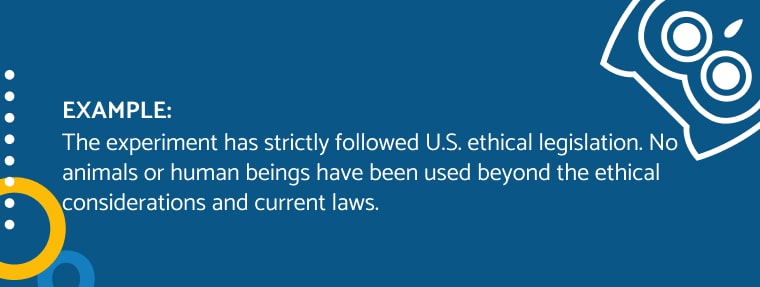How to Write a Good Lab Report for College
Table of contents
Learning how to write a lab report is not easy. One should conduct a lab experiment and ensure that each experimental error has been avoided. Experiments, observations, and conclusions are crucial. They must be performed concisely.
We shall help you to analyze experimental error possibility, compare outcomes, and cover the following bits:
- Purpose and importance of a formal lab report;
- Dive into the lab report structure, from the title to the conclusion. We shall offer exemplary explanations and examples;
- Explore the nuances of formatting in APA or MLA style, along with citation examples;
- Discover essential tips for crafting a standout result.
By the end of this article, you will discover how to write your lab report that impresses your professors. It will serve as a valuable resource for future reference.
What Is a Lab Report?
A lab report is a comprehensive document. It encapsulates the essence and outcomes of a scientific experiment. It has three primary functions:
- It provides a meticulous account of the experiment. It elucidates its purpose and the methodologies. As you compare expected results, it is employed to achieve the objectives. This segment offers a clear and concise exposition of the experiment’s context and procedures.
- The lab report is a repository for the content gleaned during the experiment. The information presented within must be accurate and meticulously detailed. Turning to previous research forms the foundation for all subsequent conclusions and analyses in a lab report.
- It delves into the intricate process of drawing meaningful conclusions. It sources them from the experimental report’s discoveries. It defines the methodology for crafting a well-structured lab report conclusion. It also offers insights into presenting results and proficiently engages in insightful discussions.
To structure a lab report, you must commit substantial time and effort. It is addressed both in the execution of the experiment and in the scrupulous documentation of its particulars.
Main Sections of Lab Report
A well-structured formal laboratory report outline comprises several crucial sections. Start with a lab manual and pay attention to each part as you discuss things.
Title
The lab report title is the first impression readers receive. It should be a succinct yet informative representation of the central theme of your experiment.
Example Title: “The Impact of pH Levels on Enzyme Activity in Catalase Reactions”
This title conveys the core subject matter of the experiment, which examines how varying pH levels influence enzyme activity within catalase reactions. It is concise and specific, providing readers with a clear understanding of the experiment’s focus and making it an effective title for your lab report.
Abstract
The abstract serves as a concise overview of your lab report. It offers readers a quick glimpse into the experiment’s essence without delving into the finer details. It plays a vital role in helping readers decide whether the full report is relevant to their interests. Here’s how to compose an effective one:

The abstract above explains what the study aimed to discover. It tells how different amounts of water affect plant growth and briefly describes the experiment’s setup. It involved growing two groups of sunflowers, one with lots of water and the other with very little.
Additionally, the abstract mentions the primary results. It includes the well-watered group growing taller and having more leaves. It concludes by summarizing the main takeaway. Giving plants more water helps them grow better, and this study can be useful for gardeners and farmers in plant care.
Introduction
The introduction to your lab report is like the opening act of a play. It sets the stage and introduces the characters (or variables). It gives the audience (readers) the context they need to understand the story (your experiment). You may add information on previous research if it’s mentioned in your lab manual.
Here’s a comprehensive but easy-to-understand example of how to write an introduction for a lab report:
Example of laboratory report introduction:
“In the world of science, understanding the properties of magnets and how they interact with each other is a fundamental inquiry. Magnets have long fascinated scientists and curious minds alike. Have you ever wondered why magnets attract or repel certain objects, like paper clips or other magnets?
This experiment aims to shed light on the magnetic properties of different materials. It also tells how they affect the strength of a magnetic field. Magnets are categorized as either permanent or temporary, with varying strengths. Understanding these properties can have practical applications. We can go from designing efficient motors and generators to medical technologies. Some examples are magnetic resonance imaging (MRI).
This investigation will examine the strength of magnetic fields generated by permanent magnets, such as those found in refrigerator doors or magnetic toys. We will also explore the magnetic properties of temporary magnets. For the most part, materials that only exhibit magnetic behavior when exposed to an external magnetic field. Iron nails and paper clips are common examples of temporary magnets.
The following lab report sections will delve into the methods used to experiment, the materials employed, data collection and analysis, and the conclusions drawn from our research. You will have a comprehensive understanding of how different materials exhibit magnetic behavior and their relevance in science and technology.”
The introduction begins with a captivating question to catch the reader’s curiosity. Its purpose is to engage them in the subject matter of magnets. It provides a general context by explaining the significance of understanding magnetism and researching its applications in various fields.
The introduction of a lab report presents a clear hypothesis. It states that the strength of the magnetic field will differ between permanent and temporary magnets. This conclusion is based on their inherent properties. It outlines the experimental lab report’s basic design. The process involves measuring the magnetic field strength of various magnets. It reiterates the relevance of the experiment’s discoveries to the real world.
Materials and Methods
As your lab report’s engine room, this passage provides a structured guide on how your experiment was conceived and executed. To ensure clarity and accessibility, this section is divided into several key subsections.
- Experimental Design. This subsection explains the fundamental design of your experiment. You must focus on its purpose, scope, and specific goals. Think about the identification of independent and dependent variables. Besides, it must provide a brief overview of the methodology employed. The trick is to provide readers with an understanding of the experimental process.
- Materials. In this part, you enumerate all materials, equipment, and chemicals used in the experiment. Include precise details such as brand names, model numbers, and chemical concentrations.
- Procedure. This section provides a step-by-step description of the experimental procedure. It must offer enough detail for someone else to replicate the experiment based on your instructions. Instructions for writing a lab procedure should follow a chronological order. Be precise and clear, including specific quantities, durations, temperatures, and other relevant parameters. Safety precautions must also be included. This is especially true when dealing with hazardous materials or processes.
- Data Collection. Here, you explain how your research content was collected during the experiment. Describe the methods and instruments used for data collection. If applicable, detail the sampling methods and mention any control groups utilized. Additionally, specify the number of replicates or trials performed to ensure content reliability.
- Data Analysis: Describe the procedures used. They may involve mathematical calculations, statistical tests, or specific software for data processing. Include any relevant statistical or mathematical formulas. Do so if they are employed in deriving results from the raw bits.
- Graphs and Figures. Describe the graphs, charts, or figures created to represent the data held constant. Moreover, it references each visual aid and explains its purpose. Ensure that each graph or figure is clear. Label them accurately and directly related to the information discussed in the text.
- Controlled Variables: Discuss how extraneous or confounding variables were controlled during the experiment. Explain the conditions that were kept constant to isolate the effect of the independent variable. Offer critical materials first and repeat them in the final section.
- Ethical Considerations. Work on this part if your experiment involved human subjects/animals or raised sensitive ethical concerns. Briefly describe the ethical approval process. Talk about how you ensured ethical conduct during the experiment.

- Quality Control. Explain the measures taken to ensure the quality and accuracy of your measurements and results. This may involve instrument calibration, calibration standards, or other quality control procedures.
- Reproducibility. Provide a citation and detailed description if your experiment utilized a published or modified method. Ensure that others can replicate the experiment.
- Appendices. Include any supplementary materials for the appendix lab report section. They may include data sheets, calculations, or additional details. Add anything that can enhance the comprehensive understanding of your experiment. Include a materials list in the beginning.
The structured Methods section of the lab report provides a roadmap for experimenting. It ensures your readers grasp the procedure and clarifies analysis and ethical considerations. Focus on anything involved in your scientific lab report exploration.
Results
This part of your lab report reveals the outcomes of your experiment. The goal is to showcase them through various visual aids such as tables, graphs, and figures. The goal is to write a results section for a lab report with a clear and informative representation of your information.
Example Results:
This study tested the effectiveness of various concentrations of a cleaning solution. The aim was to remove three common stains: coffee, ink, and red wine. The cleaning solution was applied to fabric samples stained with these substances, and the results were recorded.
Stain Removal Results:
- Coffee Stains. The cleaning solution showed optimal performance at a concentration of 10%. It was effectively removing 95% of the coffee stains. Lower concentrations exhibited reduced effectiveness. It showed a 5% solution removing only 45% of stains.
- Ink Stains. A 20% concentration of the cleaning solution displayed the best results for ink stains. It was eradicating 90% of the stains. Concentrations below 10% struggled to remove stains. It was with a 5% solution, removing only 20%.
- Red Wine Stains. A 15% concentration of the cleaning solution demonstrated the highest stain removal efficacy, eliminating 85% of red wine stains. Concentrations of 10% and below were less effective, with a 10% solution removing 60% of the stains.
This hypothetical Results section proposes the data regarding stain removal effectiveness. It is achieved via descriptions and percentages. The absence of tables or graphs does not hinder the conveyance of essential outcomes.
Discussion
The next unit of your lab report is a discussion. Written in the past tense, it is where you step into the role of a scientific detective with raw data. The purpose is to dissect the results to discern their meaning, significance, and broader implications.

Example of discussion in the lab report:
Imagine an experiment that explores the relationship. Let’s deal with temperature and the rate of chemical reactions. This is an example of a lab report discussion section:
- Interpretation in Context of the Hypothesis:
Our initial hypothesis suggested that an increase in temperature would lead to a higher reaction rate. The results support this hypothesis. We observed a substantial acceleration in chemical reactions as the temperature increased. This aligns with the basic principles of chemistry. The higher temperatures generally provide reactant particles with greater kinetic energy. It is facilitating more collisions and, consequently, faster reactions. Scanning electron microscope provides background information and sets clearer sample calculations. They allow for a comparison of outcomes.
- Discussion of Unexpected Findings:
However, we encountered an unexpected finding during the experiment. At very high temperatures, nearing the upper limits of our apparatus, we observed a slight decline in reaction rates. This anomaly might be attributed to the possible denaturation of enzymes. Alternatively, it can be a shift in the equilibrium position of the reaction at extreme temperatures. Further investigation is needed to elucidate this phenomenon based on sample calculation fully. It will allow us to present data and showcase an experimental objective with a brief description for the lab partners.
- Comparison to Existing Literature and Theory:
Our results are consistent with the established theory that reaction rates are temperature-dependent. This corroborates the Arrhenius equation, which outlines the exponential relationship between temperature and reaction rate constants. These discoveries also correspond to prior research in chemical kinetics, reinforcing the established principles governing reaction kinetics.
Thus, this section presents the observations in a lab report. In a dissected, interpreted, and contextualized way. Unexpected findings are acknowledged for further investigation. The results are placed within the framework of existing knowledge. One may use theories and their practical significance.
Conclusion
Last but not least is the finale of your lab report. It is as important as the title page in the lab handout. To write a lab report conclusion, you need to bring together all the elements of your experiment. Written in the present tense, it discusses the broader implications of your lab group findings.
Example Conclusion:
Summarizing Key Outcomes and Implications:
Throughout this study, we delved into the influence of varying soil compositions on plant growth. The results demonstrated that the type of soil used significantly affects the growth of our chosen plant species. In particular, the plants cultivated in loamy soil exhibited the most robust growth. With greater heights, increased foliage, and more extensive root systems. In contrast, plants grown in clay soil displayed slower growth rates. Those in sandy soil exhibited intermediate growth.
Support or Rejection of Hypothesis:
Our initial hypothesis posited that loamy soil would be the most conducive to plant growth. The results corroborate this hypothesis. They support that soil composition is a key determinant of plant growth. As such, we can confidently affirm that the data collected supports the hypothesis.
Insights and Recommendations for Further Research:
The implications of this study extend beyond our laboratory. It underscores the importance of soil composition in agriculture and shows its place in horticulture and ecological restoration efforts. Farmers and gardeners can benefit from these evaluations. This is achieved by choosing suitable soil types for different crops. It will also work for plants to optimize their growth. Future research endeavors may delve deeper into various soil types’ precise nutrients. One can also address moisture-holding capacities. It offers a more comprehensive understanding of the underlying mechanisms driving plant growth.
In the lab report’s conclusion, the key findings are concisely summarized. Their broader implications must be discussed. The hypothesis is evaluated against the results. The recommendations for further research are provided. It is expanding the horizons of the study’s impact. It is usually not written in the past tense unless you talk about some background theory in one or two sentences.
How to Format a Lab Report?
Two of the most commonly employed citation styles are used for this type of writing. The American Psychological Association (APA) style and the Modern Language Association (MLA) style. Depending on previous studies and similar investigations in a standard format, you must choose either one. Always use proper citations for your research question.
- APA Style: In APA formatting, in-text citations follow the author-page format. For instance, if you are referencing a source by Smith published in 2020, your in-text citation would appear as (Smith, 2020). The full details of the source must be provided. Include the author’s name, publication date, title, and other relevant information. List it in the reference section at the end of the lab report.
- MLA Style: MLA style also employs an author-page format for in-text citations, such as (Brown 15). In MLA, a Works Cited page presents a comprehensive list of all your sources, including full bibliographical details.
General Formatting Guidelines
- Margins: Use 1-inch margins on all sides of your document. Adequate margins give your report a clean, well-organized appearance and make it easier to read.
- Font: Choose a clear and readable font, such as Times New Roman, in a 12-point size.
- Page Numbers: Number your pages consecutively in the upper right-hand corner, beginning with the first page. Page numbers help readers navigate your report, especially if it spans multiple pages.
Examples of Citations:
- APA Style In-Text Citation: Suppose you are referencing a scientific paper in APA style authored by Smith and published in 2020. Your in-text citation will be presented as (Smith, 2020). Include the full source information in the reference section at the end of the lab report. Add the author’s name, publication date, title, and other relevant information.
- MLA Style In-Text Citation. In MLA style, an in-text citation for a source authored by Brown and appearing on page 15 of the source would be presented as (Brown 15). The Works Cited page at the end of your report would contain the complete source details.
Choose the correct citation style and adhere to formatting guidelines. Ensure your lab report is well-structured. It must be organized, credible, and in line with academic standards.
Tips on How to Write a Lab Report for College Success
You still have to do some lab work to study chemistry, biology, microbiology, or physics. Therefore, writing high-quality lab reports is crucial to your academic studies. Aspiring scientists and students need a good laboratory report when inventing something. The same is true when proving facts or elaborating on findings. Here is how to write a college lab report:
- Devote time to the task. Explaining why you’re writing this report is crucial. Do it in your own words by offering detailed information. Use one paragraph for experimental results and study of the permanent equipment. Define the goal of your academic assignment and what you are trying to prove. You may talk about an experimental design and logical explanations. They must allow you to measure precisely and use calculated values.
- Use a Flowchart. This roadmap keeps readers focused while reading your assignment before you come to a major conclusion. In case your experiment failed, you may relate results to repeated measures and mention theoretical issues of your own work.
- Accurate Note Taking. Taking notes is the most crucial part of learning to write a lab report in biology and many other types of future work. Take notes of everything in the lab so that you can use it for further discussion. Ensure you describe all machines used, materials, concentrations, and temperatures.
- Explain in Detail. Some professors expect tables and graphs because they provide useful information. Accordingly, mention all calculations and formulas used. This helps readers follow your report and see how you reached your results. Students should also mention units in their discussion section to show how results compare.
- Write a Strong Conclusion. It summarizes what you did, research findings, and results obtained. Besides, a conclusion reminds readers of the details of your experiment. Even if something didn’t go as expected, mention it and explain how you plan to improve it.
Writing excellent lab reports is not easy, but we provided you with a clear explanation of every step. We know how to help you submit an excellent task. Follow the steps and tips mentioned in our article. Don’t forget to check the PaperOwl essay writers service for more tips on all types of academic writing.

Elevate Your Lab Reports for College!
Writing a lab report is an indispensable skill for science students. You can ensure your reports are informative and methodical. It is achieved via a careful devotion of time and meticulous data taking. Moreover, achieving this equilibrium defines exceptional scientific expression. A judicious use of voice ensures clarity and enhances knowledge dissemination. It also elevates the authority of your work. We are here if you are lost in your discussion section and need to address Bragg’s law. If you need to deal with an unknown metal lattice parameter where ambiguities exist, we can help! Share your discussion section with us as well!
Remember that an accurate description of materials and methods helps the validity of your findings. The strength of your lab report lies in your ability to translate results into a powerful conclusion. You’ll easily start a lab report by following the rules and examples above. Trust us, it will leave a lasting impression with your scientific work insights.







